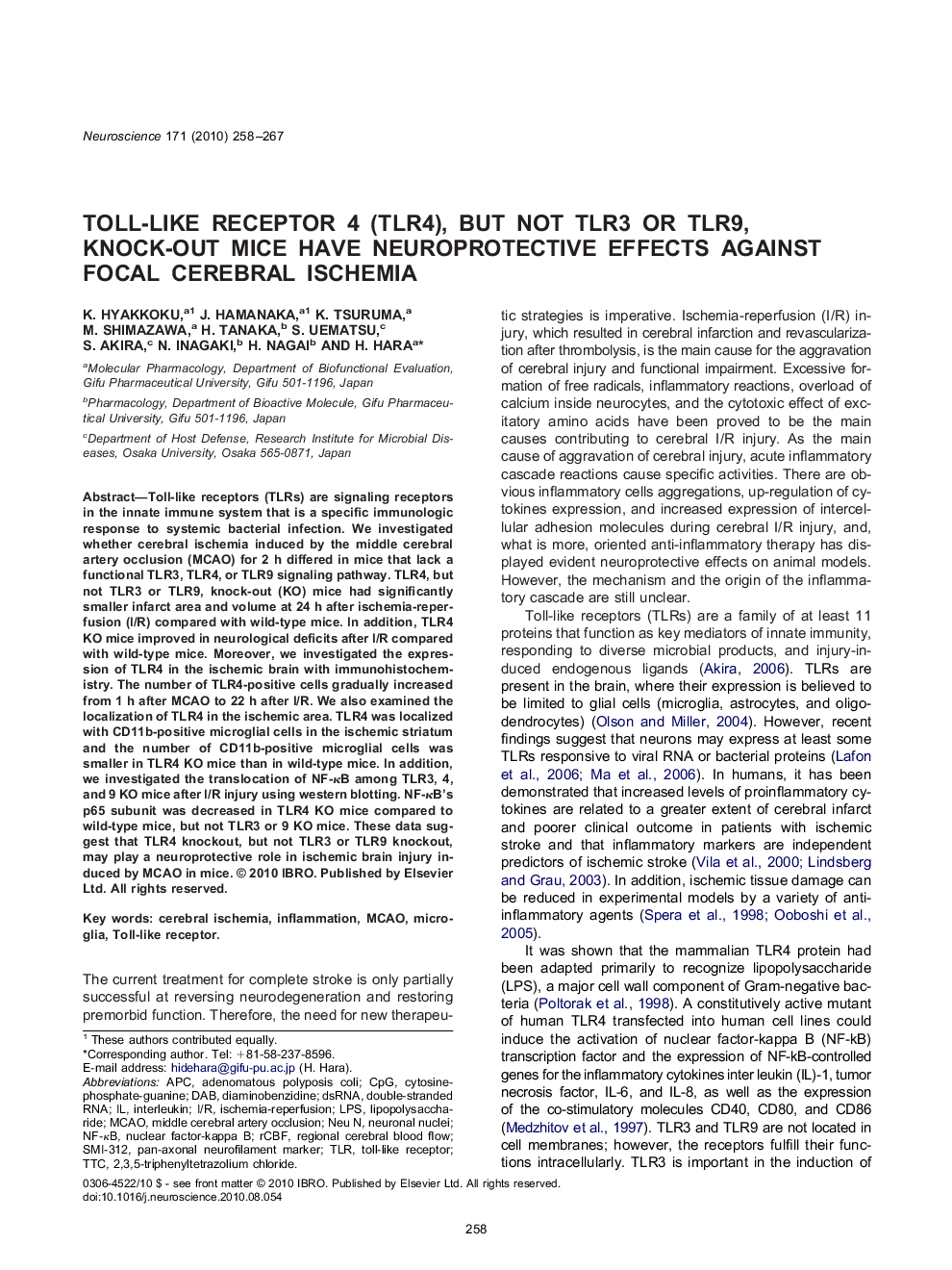| Article ID | Journal | Published Year | Pages | File Type |
|---|---|---|---|---|
| 4339307 | Neuroscience | 2010 | 10 Pages |
Toll-like receptors (TLRs) are signaling receptors in the innate immune system that is a specific immunologic response to systemic bacterial infection. We investigated whether cerebral ischemia induced by the middle cerebral artery occlusion (MCAO) for 2 h differed in mice that lack a functional TLR3, TLR4, or TLR9 signaling pathway. TLR4, but not TLR3 or TLR9, knock-out (KO) mice had significantly smaller infarct area and volume at 24 h after ischemia-reperfusion (I/R) compared with wild-type mice. In addition, TLR4 KO mice improved in neurological deficits after I/R compared with wild-type mice. Moreover, we investigated the expression of TLR4 in the ischemic brain with immunohistochemistry. The number of TLR4-positive cells gradually increased from 1 h after MCAO to 22 h after I/R. We also examined the localization of TLR4 in the ischemic area. TLR4 was localized with CD11b-positive microglial cells in the ischemic striatum and the number of CD11b-positive microglial cells was smaller in TLR4 KO mice than in wild-type mice. In addition, we investigated the translocation of NF-κB among TLR3, 4, and 9 KO mice after I/R injury using western blotting. NF-κB's p65 subunit was decreased in TLR4 KO mice compared to wild-type mice, but not TLR3 or 9 KO mice. These data suggest that TLR4 knockout, but not TLR3 or TLR9 knockout, may play a neuroprotective role in ischemic brain injury induced by MCAO in mice.
